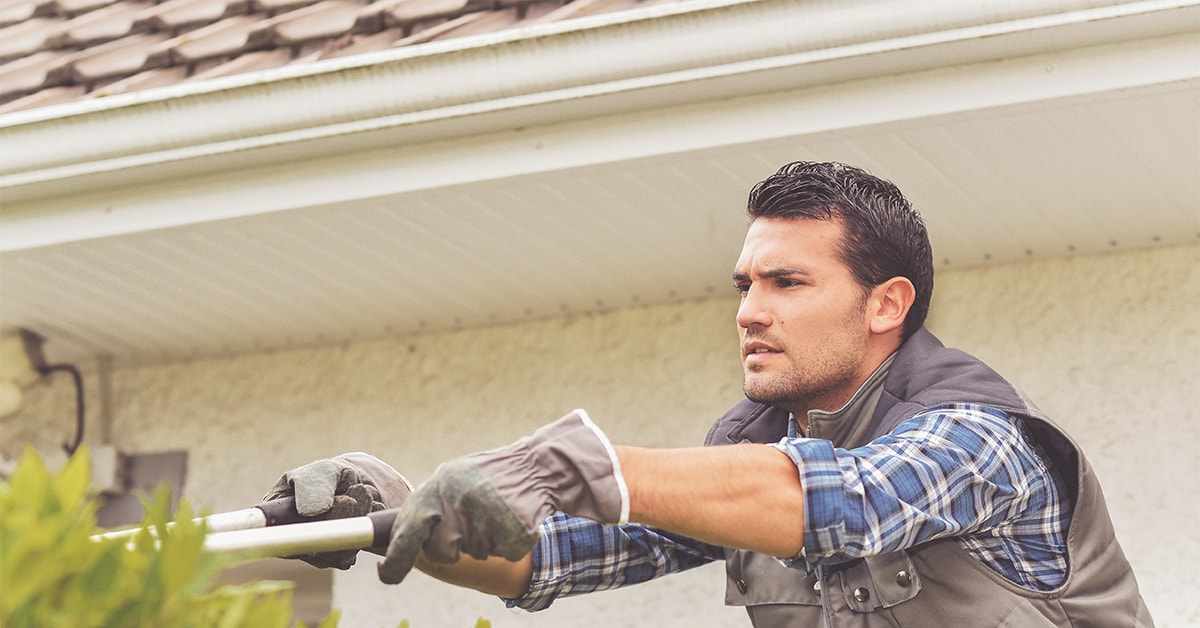The Millennial Homeowner Guide (Adulting Power Move)
by Hoffman Weber Construction, on August 11, 2020
Millennials do want to own homes, contrary to conventional stereotypes. It just takes longer to afford them because of school loans, other debt, credit scores and the need for larger down payments, according to a study by housing lender Fannie Mae.
 Unfortunately, the delay doesn’t make the average millennial any more prepared for the responsibility. First homes are a lot like first babies. They don’t come with instruction manuals. There’s a lot to know or at least learn. They make us proud, anxious, tired and poorer. All worth it, of course. But they also teach us that we need help.
Unfortunately, the delay doesn’t make the average millennial any more prepared for the responsibility. First homes are a lot like first babies. They don’t come with instruction manuals. There’s a lot to know or at least learn. They make us proud, anxious, tired and poorer. All worth it, of course. But they also teach us that we need help.
Experience and research usually makes us better with both home ownership and kids. Hoffman Weber Construction can’t accelerate the former. But we thought we would outline these new-homeowner essentials. They will help to keep you safe and sane and to make the most of your investment.
Millennials know how to turn up, but should learn to "Turn it off!"
Know how to turn off utilities, whether you are planning a DIY home improvement or need to respond to an emergency. Locate the shutoffs for water, power and gas. Don’t block access. And make sure they work.
| 1. Water | 2. Gas | 3. Electricity |
|---|---|---|
| Old gate-valve water mains are notorious for not shutting off all the way. Consider replacing yours with a lever-style ball-valve shutoff. If the home lacks individual supply line shutoffs at fixtures, add them. You will appreciate being able to keep everything else flowing when you have an issue with one fixture. | The main shutoff lever probably is at your furnace. You also can shut off the gas at the meter outdoors. You will need pliers or an adjustable wrench to close the meter valve. (No sense tempting the neighborhood prankster.) | The big circuit breaker above the individual circuit breakers will stop all power. Just flip it down. If the individual breakers are not clearly labeled by room or purpose, recruit a helper and map it out. |
10 Ways to Slay Home Safety
Safeguarding your family
Don’t wait to identify and fix things that could put your family and guests at risk. If you’re lucky, the home inspection identified issues. If not, build confidence by doing it yourself.
- Test GFCI receptacles that prevent electrocution in kitchens, bathrooms, basements and outdoors. To be safe, use a GFCI receptacle analyzer. Don’t just push the test and reset buttons. It will ensure the device not only works but is properly wired.
- If you spend a lot of time in your basement, test for seepage of radon gas from the ground. The long-term (3 to 12 month) test will be more accurate than the quick tests because concentrations rise and falls over time. The EPA reports that radon is second only to tobacco for causing lung cancer. If the radon level is unsafe, consult Hoffman Weber about mitigation.
- If your house was built before 1978, test paint (especially windows and trim and old siding) for lead that can cause serious developmental and behavioral problems. Peeling or chalking lead paint is most dangerous to young children and pregnant women. But remodeling and painting prep also can create dangerous airborne lead particles.
 If you disturb lead painted surfaces when remodeling or painting and fail to take precautions, you will put your family and pets at risk for serious health problems.
If you disturb lead painted surfaces when remodeling or painting and fail to take precautions, you will put your family and pets at risk for serious health problems. - Beware of overhead power lines, especially when using aluminum ladders around the home. Aluminum ladders conduct electricity. Fiberglass ladders are safer because they don’t.
- Check the tension adjustment on the garage door opener to make sure it will reverse and won’t crush a child or pet. Slip an open shoebox under the door and adjust the down force setting on the motor so the door reverses when it strikes the box.
- Replace smoke/CO detectors that take old-fashioned (six-month) 9-volt batteries with ones whose lithium ion batteries last 10 years. Replace any detector that’s over 10 years old.
- Call GopherStateOneCall at 811 to locate and mark underground electrical, gas, cable and plumbing lines before digging on your property.

Read - Keep Mice Out for Good
- Mouse proof – Look for signs, identify access, seal. If your home develops a mouse problem you will have no peace. Besides, it’s gross and can make you sick.
Safeguard your housePeople are priceless, but houses don’t come cheap. To protect your investment, never underestimate the damage potential of minor water problems, fire hazards or deferred maintenance.
- Minor but persistent moisture intrusion from faulty flashing, caulking or leaky plumbing can lead to costly structural wood rot, insect infestation and mold. Hoffman Weber can identify and correct these problems during remodeling.
- Create a periodic maintenance routine and checklist (refilling salt in water softener, changing the furnace filter, testing the sump pump, cleaning the dryer vent duct, unclogging gutters after leaves fall.)
Want extra protection? Check out the 7 Best Home Warranty Companies in 2020 according to This Old House.
 8 Ways to Reduce Home Maintenance
8 Ways to Reduce Home Maintenance
Remodeling for JOMO
Life is for living. Explore ways to reduce or speed chores and maintenance so you can spend more time on what you like to do (Netflix and chill).
- Composite or PVC decking and aluminum guard rails rather than wood.
- Low-maintenance siding and composite trim that will not need to be painted every five years.
- Laundry near bedrooms rather than in basement
- Mudroom to provide a transition space and keep the rest of your home cleaner.
- Direct-vent gas fireplace or insert in place of wood-burning fireplace
- Gutter leaf guards
- Lawn irrigation system
- Use the good stuff. Don’t buy cheap paint that can’t be scrubbed.
 Know your limits
Know your limits
Because the struggle is real
Home ownership gives Millennials more control over their living environment, but not complete control. Just because you own the property doesn’t mean you have free rein to do anything.
- Understand zoning restrictions such as setbacks from property lines. You may not be able to expand the garage or add a portico.
- Know whether you can trim the neighbor’s tree that overhangs your fence. Generally yes, unless it takes more than one-third of the canopy and endangers the plant.
- Be aware of covenants from your neighborhood association (permission to change house color, install a fence, build a shed)
- Acknowledge the limits of your own DIY abilities. Start small. Fail small. Acquire tools and experience incrementally. Call Hoffman Weber Construction for the big stuff.
 Important Homework for new homeowners
Important Homework for new homeowners
Like every major investment, homes require us to keep records and understand costs and safeguards.
- Keep track of home improvement expenses. They can be deducted from your capital gain when you sell.
- Understand your insurance policy, what’s covered, what’s not. Sewer back up? Deductibles? Full replacement value?
- If you are looking at your home as a short-term investment, don’t over improve. Consult the recent Remodeling Cost vs. Value report to understand which remodeling and home improvement projects retain the most value at resale.
- Finally, remember that good enough for now may not be good enough. Professional quality remodeling and materials increase value while funky DIY improvements performed without permits may actually reduce value and appeal. When in doubt, call Hoffman Weber Construction.





